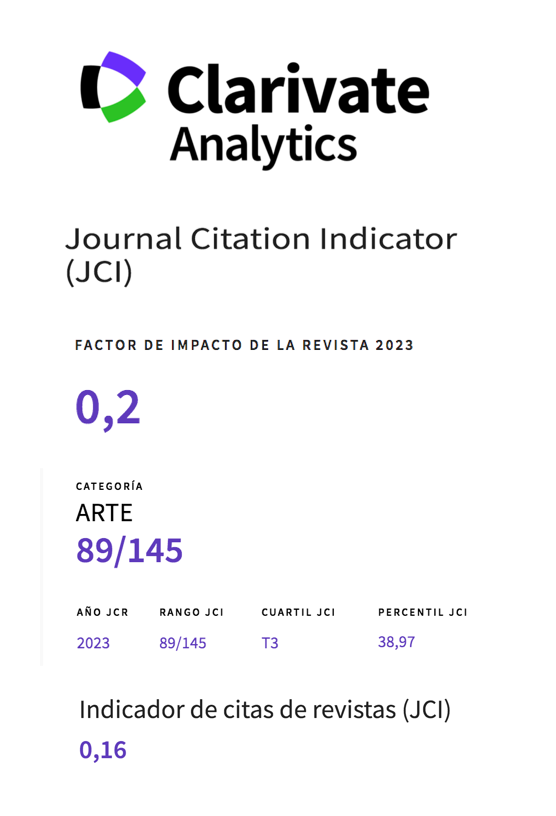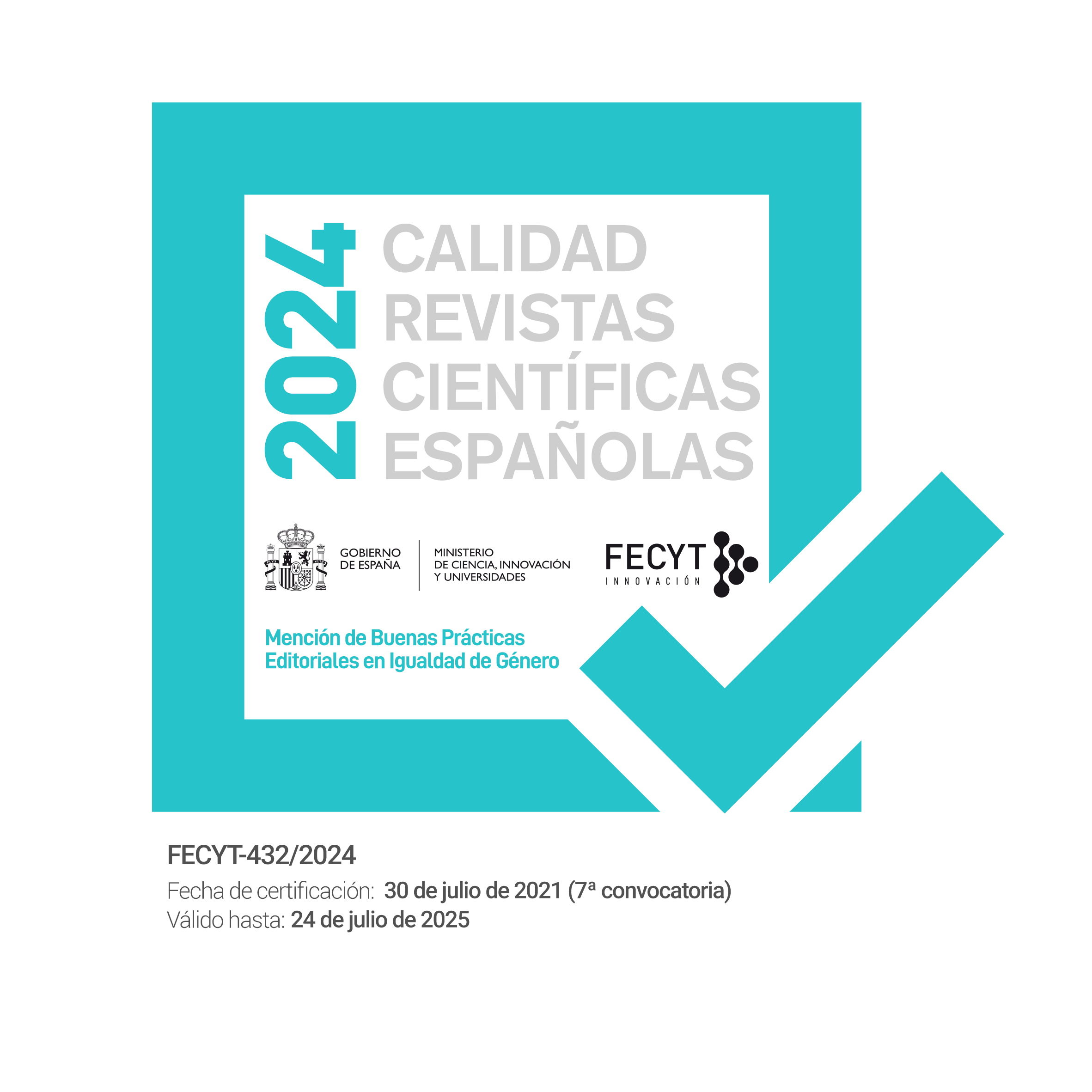Photography: Not Binary Masculinities: This that is Excluded from Gender Violence and Invalidates It
Abstract
This paper seeks to argue the need to broaden the definition of gender violence. According to the Organic Law LO1/2004, only men can be the aggressor and the scope of action of the law at present is restricted to heterosexual couples and their family members. What is being argued here is the notion that all, notwithstanding gender can be the aggressor.
Taking this definition, the selected artists, it could be argued, are the recipients of social gender violence. Their art work is often marginalized if not rejected altogether. That is the reason why they develop strategies to make visible their ‘invisibility’ and bring into being their new forms of masculinity. From different sexes and sexual orientations, these strategies can subvert the masculinity and not be understood as correlative to sex or opposite and complementary to femininity. In consequence, the root of gender violence structure is destabilized.
Downloads
-
Abstract943
-
PDF (Español (España))416
References
Aznaréz Torralvo, M. (2004, 1 de febrero). ¿Violencia de género o violencia machista? El país/ Opinión/La defensora del lector,p.12. Consultado de http://elpais.com/diario/2004/02/01/opinion/1075590009_850215.html
Barthes, R. (1990). La cámara lúcida (Nota sobre la fotografía). Barcelona: Paidós
Blaustein, J. (2011). Jesse Burke Interview. APhotoEditor/ This Week in Photography Books. Consultado de http://www.aphotoeditor.com/2011/09/27/jesse-burke-interview/
Bruce, K. & McCout, F. (2009). Sh[OUT] Programme. En SHOUT: Contemporary art and human Rights. Lesbian, gay, bisexual, transcender and intersex art and culture (pp 11-12). Scotland: Sean McGlashan and Fiona MacLeod.
Butler, J. (1990). Gender Trouble. Feminism and the Subversion of Identity. New York and London: Routledge.
----------- (2001). El género en disputa. El feminismo y la subversión de la identidad. Mexico: Paidos.
Castelló Nicás, N. (2009). Concepto general de violencia de género: Un análisis crítico del artículo 1.3 de la Ley Orgánica de Medias de Protección Integral contra la violencia de género. En M.J. Jiménez Díaz (Coord.) LA LEY INTEGRAL: Un estudio multidisciplinar (pp. 57-77). Madrid: Dykinson s.l.
Combalía, Victoria. (2008). Amazonas con la cámara. Madrid: Fundación cultural Mapfre.
Cortés, J.M. (2002). Héroes Caídos. Masculinidad y representación. En J. M. Cortés, Construyendo masculinidades (pp. 20-132). Valencia: EACC.Espai dárt contemporari de Castelló.
Cottingham, L. Sobre la especificad de las lesbianas en la historia del arte y de la cultura (algunas consideraciones metodológicas) en Blocnotes París.
De Beauvoir, S. (1949). El Segundo Sexo. Buenos Aires: Editorial Debolsillo.
De LaGrace Volcano. (2006). Sex Works: Konkursbuch Verlag Claudia Genhrke:Tübingen/Berlín.
Del LaGrace Volcano. www.dellagracevolcano.com
De Lauretis, T.(1989). Technologies of Gender. Bloomington: Indiana, University Press.
De Lauretis, T. (1990, primavera) Eccetric Subjects. Feminist Issues, 16, 1, 115-150.
EFE (2010, 16 de marzo). El maltrato entre parejas de lesbianas no se considera violencia de género. ElMundo.es/España/Tribunales/Respuesta de la Audiencia de Cantabria. Consultado de http://www.elmundo.es/elmundo/2010/03/16/espana/1268753513.html
Escudero Alías, M. (2009, diciembre). La retórica ambivalente de la performance drag king: estereotipos y parodia de la masculinidad en un contexto anglosajón. Arte y políticas de identidad, vol1, 49-64.
Ewing, W. A. (2008). El rostro humano. El nuevo retrato fotográfico. Barcelona: Art Blume.
Galera de Ulierte, V. (2012). Planteamientos desde lo torcido: masculinidades, fotografía y educación. En IV CongresoInternacional de Educación Artística y Visual de Jaén. Arte, educación y cultura. Aportaciones desde la periferia, Universidad de Jaén. Consultado de http://www.educacionartistica.es/cuerpo_genero_queer.htm
Gimeno Reinoso, B. y Barrietos Silva, V. (2009). Violencia de género versus violencia doméstica: La imposta de la especificad, Ciudad de mujeres. Consultado de http//www.ciudaddemujeres.com
Halberstam, J. (2008). Masculinidad femenina. Barcelona-Madrid: Egales
LO 1/2004: Ley Orgánica de Medidas de Protección Integral contra la Violencia de Género
Lorente Acosta, M. (2009). Violencia de género: acciones y reacciones. En Jiménez Díaz, M.J. (coord.) LA LEY INTEGRAL: Un estudio multidisciplinar, pp 37-55 Madrid: Dykinson s.l.
Maqueira, V. (2001). Género, diferencia y desigualdad. En Beltran & Maquieira (Eds.), Feminismos. Debates teóricos contemporáneos (pp.127-190).
Moore y Cahun.(1930). Aveux non avenus (Confesiones no confesadas).
O’Neill, M. (2011, marzo) Religion and cultural policy: two museum case Studies. International Journal of Cultural Policy, Vol. 17, No. 2, 225–243. Routledge.
Preciado, B.; Halberstam, J.; Bourcier, M.; Marzouk, M.; Belbel, M.; Vieites, A. y Vila, F. (2003). Performance, performatividad y prótesis. En Retóricas del género/políticas de identidad. UNIA 1-7.
Taylor, S. (2004, noviembre) Crying men. (Catálogo). New York: Steidl/Matthew Marks Gallery
Rivière, J. (1929). Womanliness as a Mascarade. International Journal of Psychoanalysis, Vol.10, 303-313. London.
Works published in this journal are subject to the following terms:
- The Service of Publications from the University of Murcia (publishing house) keeps the published works’ copyrights, and favors and allows the reuse of these works under the license indicated in point 2.
- Works are published in the journal’s online edition under the license Creative Commons Reconocimiento-NoComercial-SinObraDerivada 3.0 España(texto legal). They can be copied, used, disseminated, transmitted and publicly exhibited, as long as: i) the author and original source of publication are cited (journal, publishing house and work’s URL); ii) they are not used for commercial purposes; iii) the existence and specifications of this license are mentioned.
3. Conditions for auto-file. It is allowed and encouraged that authors share electronically their pre-print version (the pre-reviewed version) and /or post-print version (the reviewed and accepted version) of their Works before the publication, since it promotes its circulation and dissemination. RoMEO color: green.










